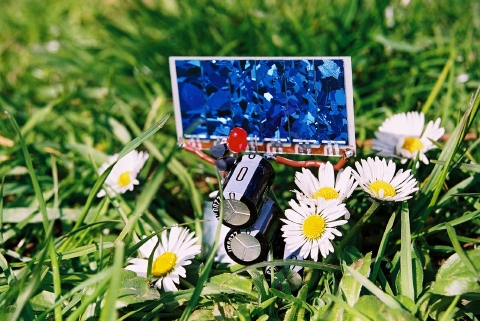 Technology is bliss. It has lavished out life spoiling other things of mother nature. According to a recent report by Union of Conservation of Nature, more than 800 animal and plant species have gone extinct in the past five centuries with nearly 17,000 now threatened with extinction.
Technology is bliss. It has lavished out life spoiling other things of mother nature. According to a recent report by Union of Conservation of Nature, more than 800 animal and plant species have gone extinct in the past five centuries with nearly 17,000 now threatened with extinction.
“We don’t want to make a choice between nature and the technology; we just want to bring nature to the same level when you have to take a decision,” Vie said by telephone from Switzerland.
“Jobs are important but not jobs to the detriment of nature,” he said. “We have done that too much and look where we have arrived.”
The new analysis shows 869 species became extinct or extinct in the wild since the year 1500 while 290 more species are considered critically endangered and possibly extinct.
At least 16,928 species are threatened with extinction, including nearly one-third of amphibians, more than one in eight birds and nearly a quarter of mammals.
By comparison, the 2004 Red List showed 784 extinctions since 1500.
PROSPERITY AND BIODIVERSITY
The report said this is not a comprehensive list with only 2.7 percent of the 1.8 million described species analyzed. The main reason has been stated as the environmental changes. Larger emission of CO2, and dangerous gases has mad some irreversible changes to the living beings.
Earlier, It was reported that due to high RF usage, certain species of birds suffered heavy losses in number. A certain breed of Sparrow found in Asia has become extinct as it died from RF power emitted from cellular mobiles.
The number of extinctions is “a gross underestimate but it does provide a useful snapshot of what is happening to all forms of life on Earth,” the study authors wrote. “It’s much more severe than the economic crisis or the bank crisis,” Vie said. “You can lose a core industry but you can rebuild one. In nature, if you lose it, you lose it, and you’re losing a lot of capital that cannot be replaced.”
He said the notion that biodiversity is secondary to economic health is largely a view held by countries in North America, Europe and elsewhere, where the connection to natural products is less direct. Technology enabled us to stay as far away from the nature and intake of out un-Natural products has made things worse.
In less developed areas, there is a direct line between human prosperity and biodiversity.
In much of the world, Vie said, “The main problem every day is not to find a job, it’s to find food … and in most places this comes from biodiversity, from nature, from fish and plants.”
For land-based species, the main threat is habitat destruction through farming, logging and development.
Climate change is not now the main threat to biodiversity but that could change, the report said.
In examining 17,000 species of birds, amphibians and reef-building corals, the report found a significant proportion that are not now threatened are susceptible to climate change, including 30 percent of birds, 51 percent of corals and 41 percent of amphibians that are not threatened now.
A very detailed e-article has been published here.
loading...
loading...
